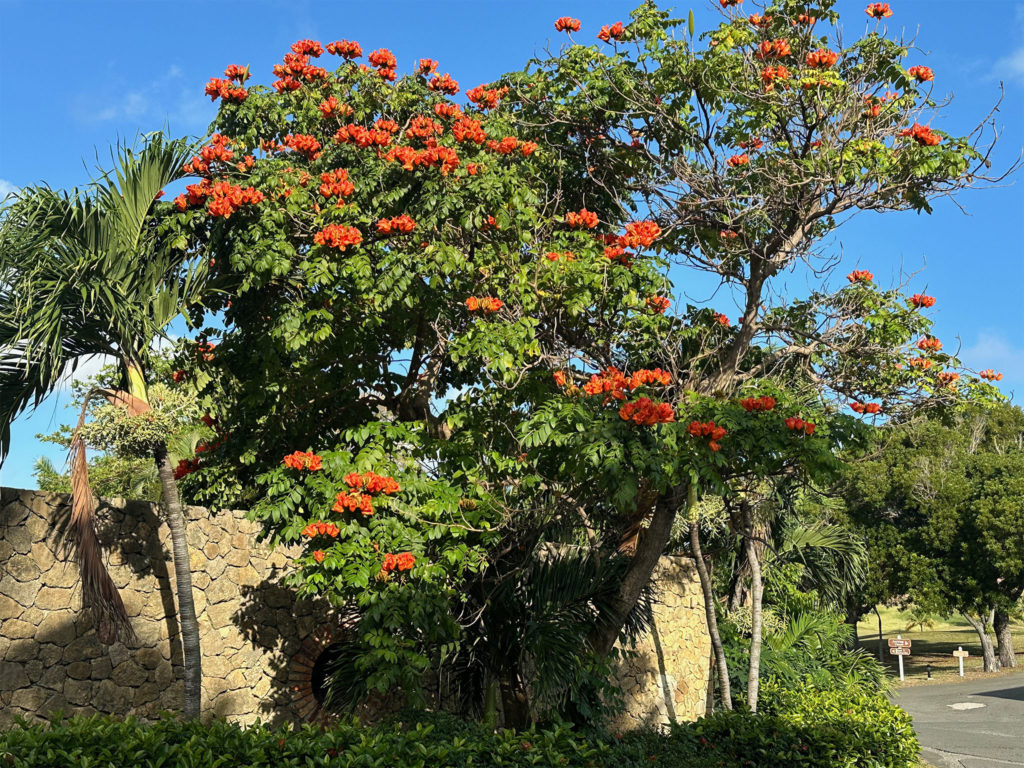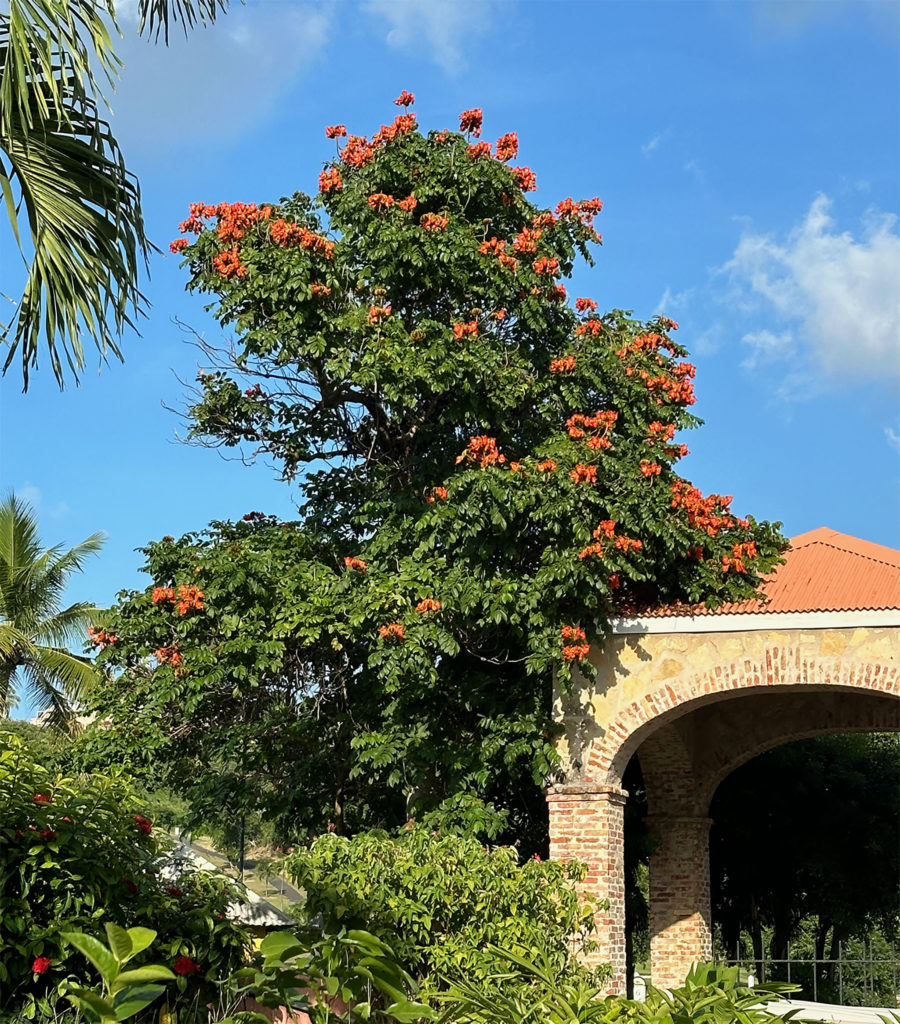African Tulip
Scientific name: Spathodea campanulata
Common names: African tulip tree, Flame of the forest, Fountain tree, Nandi flame, Scarlet bell tree, Squirt tree
The African tulip tree Spathodea campanulata, is a genus in the Bignoniaceae plant family. It is native to the tropical dry forests of Africa, and can reach heights between 7 to 25 meters (23 to 82 feet). It is notorious as one of the “World’s Worst” invaders.
Extensively planted as an ornamental tree in tropical regions, it is admired for its striking reddish-orange or crimson (occasionally yellow), bell-shaped flowers. Europeans first encountered this tree in 1787 on the Gold Coast of Africa.
Medicinal uses:
The African tulip tree is not widely recognized for significant medicinal uses. However, in some traditional medicine systems, various parts of the tree have been used to treat certain ailments. The bark, leaves, and flowers of the African tulip tree have been used in some regions to make herbal remedies for conditions such as malaria, stomachaches, epilepsy, convulsion, kidney disease, and urethritis and skin disorders, and as an antidote to animal poisons. African Tulip eye-drops are available OTC.


